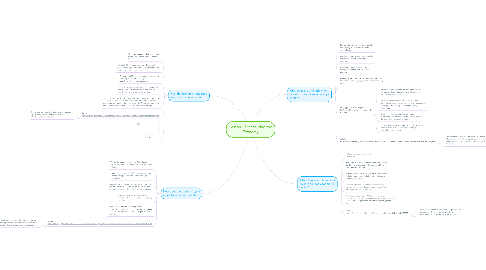
1. How do economists measure the size of an economy?
1.1. Gross domestic product is the main measure of an economy’s overall size.
1.2. Nominal GDP is the measure of the current year’s total output; and real GDP measures total output adjusted for inflation.
1.3. Per capita GDP measures a country’s average output per person, allowing for country-to-country comparisons.
1.4. Gross domestic product: the market value of all final goods and services produced within a country during a given period of time
1.5. final good vs intermediate good: Any new good that is ready for consumer use and is included in the calculation of GDP are final goods. A good used in the production of a final good and is not included in the calculation of GDP is an intermediate good.
1.6. Article: http://www.ft.com/cms/s/0/17df679c-98b7-11e5-bdda-9f13f99fa654.html#axzz3tGtAunnB
1.6.1. This article connects with the essential question by showing how a tremendous rise in GDP effects Australia's economy.
1.7. Image
2. How does the business cycle relate to economic health?
2.1. The business cycle consists of four phases: expansion, peak, contraction (or recession), and trough.
2.2. As measured by real GDP, the economy grows during an expansion and shrinks during a contraction.
2.3. The peak marks the end of an expansion and the start of a contraction. The trough marks the end of a contraction and the start of a new expansion.
2.4. Business cycle: a recurring pattern of growth and decline in economic activity over time
2.5. Recession: a period of declining national economic activity, usually measured as a decrease in GDP for at least two consecutive quarters (six months)
2.6. Article: http://seekingalpha.com/article/3715646-no-recession-is-signaled-by-ims-business-cycle-index-update-november-26-2015
2.6.1. This article connects with the essential question by showing how the business cycle index (BCI) can signal when a recession could happen.
3. What does the unemployment rate tell us about an economy's health?
3.1. People who do not have jobs but who are looking for work are officially unemployed.
3.2. A rising unemployment rate is usually associated with an unhealthy economy.
3.3. A declining unemployment rate is usually associated with a healthy economy.
3.4. Unemployment rate: the percentage of the labor force that is not employed but is actively seeking work
3.5. Four types of Unemployment: Frictional, Structural, Seasonal, and Cyclical
3.5.1. Frictional unemployment: Results when workers are seeking their first job or have left one job and are seeking another
3.5.2. Structural unemployment: Results when the demand for certain skills declines, often because of changes in technology or increased foreign competition
3.5.3. Seasonal unemployment: Results when businesses shut down or slow down for part of the year, often because of weather.
3.5.4. Cyclical unemployment: Results from a period of decline in the business cycle; unemployment caused by a contraction
3.6. Article: http://www.defense.gov/News-Article-View/Article/632396/veteran-unemployment-rate-lowest-in-nearly-8-years
3.6.1. This article connects with the essential question by relating how the past unemployment rate was compared to the unemployment rate today for Veterans.
4. What does the inflation rate reveal about an economy's health?
4.1. Inflation is a rise in the overall price level.
4.2. Economists use the Consumer Price Index (CPI) to determine changes in the price level from one period to another.
4.3. A strong economy is likely to have a low level of inflation; and a high inflation rate indicates an unhealthy economy.
4.4. Inflation rate: the percentage increase in the average price level of goods and services from one month or year to the next
4.5. Consumer price index : (CPI) a measure of price changes in consumer goods and services over time; the CPI shows changes in the cost of living from year to year
4.6. Article: https://citizentv.co.ke/business/kenyas-inflation-rate-likely-to-fall-107813/
4.6.1. This article connects to the essential question by showing how the weather can effect the inflation rate, which also effects the economy.

